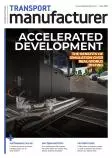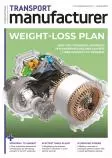The future of automotive materials is increasingly defined by sustainability and innovation – and a new collaboration between Bcomp and Cupra demonstrates that high performance and environmental responsibility can go hand in hand
The recently unveiled Cupra Tindaya Showcar, showcased at IAA Mobility 2025 in Munich, integrates ampliTex flax-fibre composites developed by Swiss cleantech pioneer Bcomp, highlighting how bio-based materials can deliver both technical excellence and design sophistication in next-generation vehicles.
FLAX FIBRE COMPOSITES
Bcomp’s ampliTex technology replaces traditional synthetic reinforcements, such as carbon fibre, with a renewable, plant-based alternative derived from European flax. Engineered in a twill 2/2 weave, ampliTex achieves up to 85% CO2 reduction compared to conventional carbon-fibre composites across its life cycle. The material’s natural fibre architecture provides a high strength-to-weight ratio, inherent vibration damping, and superior impact resistance – properties critical for both interior and exterior automotive components.
In the Tindaya, ampliTex is featured in Cupra’s signature bucket seats and front bumper, marking one of the first concept vehicles to showcase natural-fibre composites in both visible interior and semi-structural exterior applications. Working alongside Cupra’s Colour, Materials and Finish (CMF) team, Bcomp engineers co-developed a custom copper-toned finish, merging advanced materials with the brand’s warm, metallic aesthetic inspired by volcanic earth tones.
ENGINEERING A NEW MATERIAL IDENTITY
The Tindaya’s name – drawn from a volcanic mountain in Fuerteventura – underscores Cupra’s connection to raw natural elements. This theme extends to material selection and finish, where the use of ampliTex aligns with the brand’s push to integrate sustainability throughout the vehicle lifecycle. By replacing synthetic fibres with flax-based composites, Cupra reduces dependency on petroleum-derived materials while cutting embodied carbon without sacrificing performance or design freedom.
For engineers, the integration of ampliTex into exterior panels and seating structures represents a significant step forward. Natural-fibre composites are not only lighter but also offer improved crash energy absorption and reduced acoustic transmission, enhancing both efficiency and comfort. Their compatibility with standard resin systems and moulding processes also supports scalability for future production vehicles.
FROM CONCEPT TO PRODUCTION
The collaboration between Bcomp and Cupra extends beyond concept innovation. The two companies first worked together on the Cupra Born VZ, the brand’s electric performance model now in series production, where ampliTex was used for interior trim elements. The success of that partnership has laid the groundwork for expanding the use of bio-based composites from design prototypes to mass-market applications.
A NEW BENCHMARK FOR SUSTAINABLE MOBILITY
“For CUPRA, sustainability goes beyond simply swapping internal combustion engines for electric powertrains,” says Nicolas Samson, sales manager at Bcomp. “By replacing conventional synthetic materials, they are leading the way for the future of mobility.”
Francesca Sangalli, head of colour & trim concept & strategy at Cupra, adds: “Bcomp’s material expertise has enabled us to blend technology and sustainability. We’ve proven that natural fibre composites can deliver the same exceptional aesthetics and performance as synthetic alternatives.”
According to the partners, Tindaya Showcar is not only a design exercise but also a technical statement. By merging bio-based materials science with automotive engineering, Bcomp and Cupra are demonstrating how responsible innovation can shape a new era of lightweight, circular, and aesthetic mobility.











